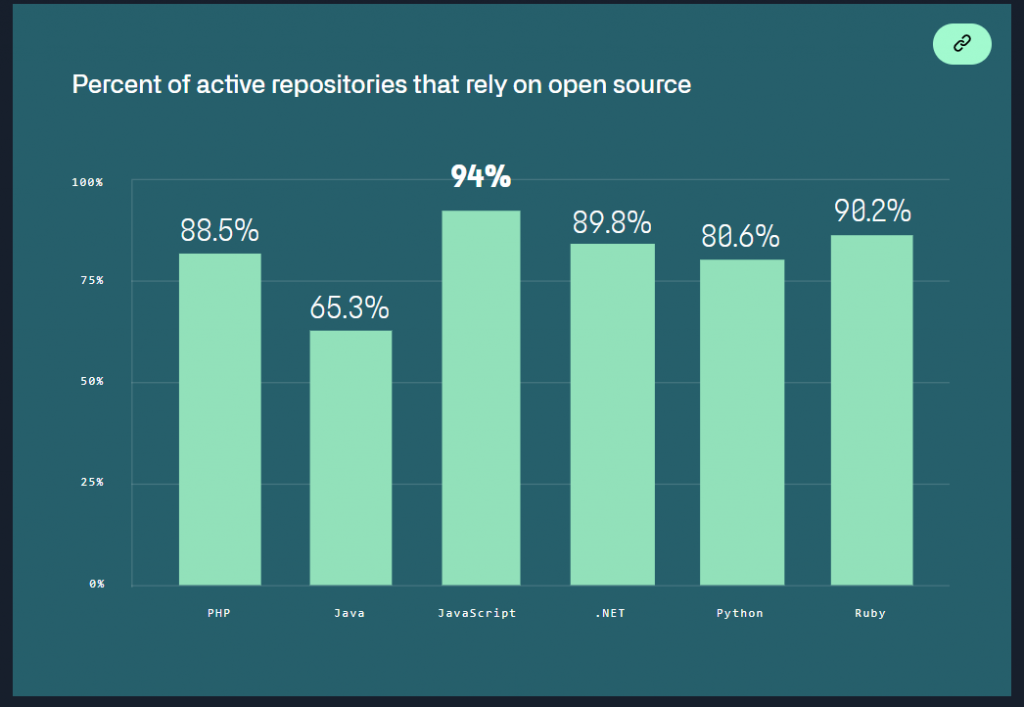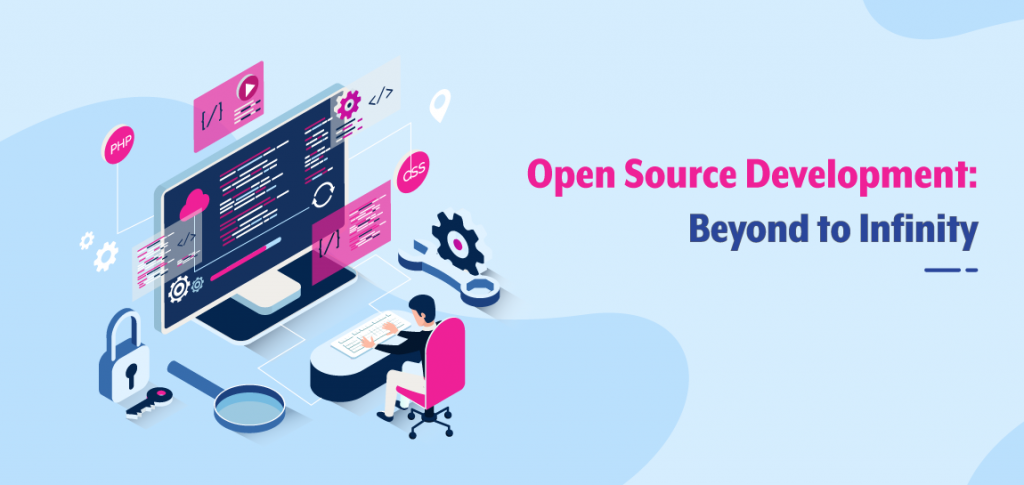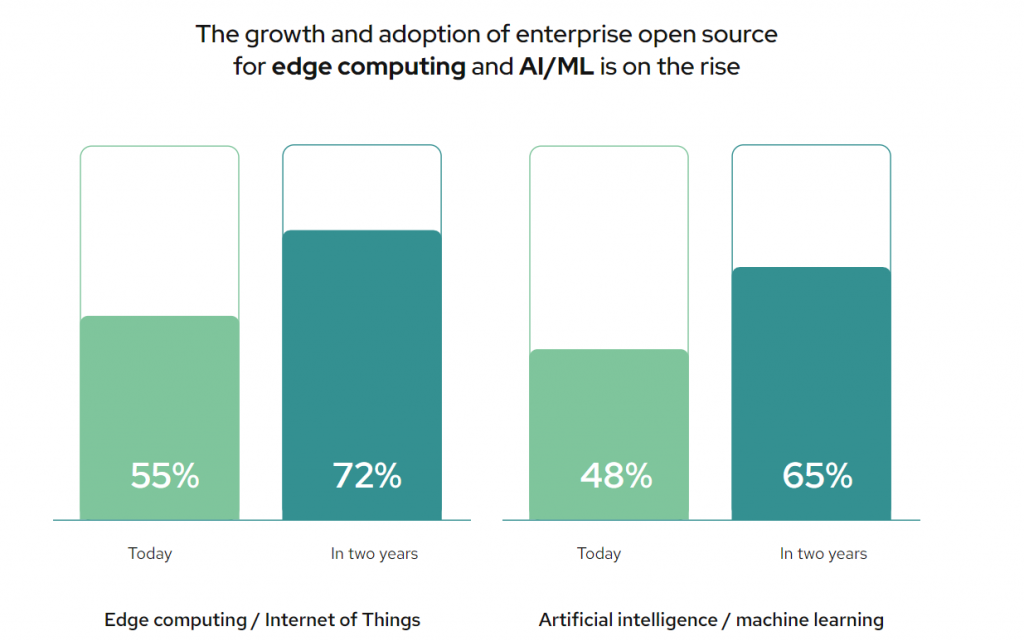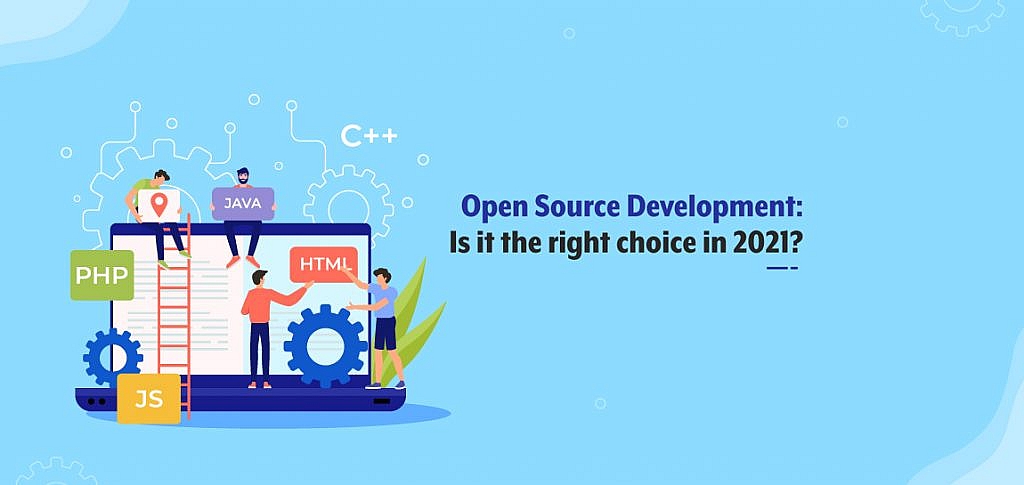Open Source Development: Is it the right choice in 2021?
A big yes! Open source development is no longer an underdog. Its popularity has exploded like a volcano.
There’s no reason to say NO to it in 2021; in fact, it is to be analyzed that it is here to stay for many years to come. The reason for its remarkable supremacy isn’t just because it’s “free,” but also because it comes with a slew of benefits that make it easier for developers to use its beautiful features.
It helps developers develop specific approaches for creating computer programs and add tremendous value to their development skills. The beauty of open-source development has spread out its charm so much that now most of the software systems in the world are running through open-source development.
Have many doubts popped out in your mind?
Let’s dive deeper into open source development to know why it continues to shine like an evening star.
Open Source Development: The origin
It was the era of 1991, when Linus Torvalds, a 21-year-old computer science student, announced that he would use a free operating system just as a hobby. He also said that it wouldn’t be as big and professional as GNU. He didn’t know that his hobby turned out to be the origin of the world’s first free operating system, the Linux kernel. The whole process then kickstarted the open-source software movement.
After three decades later, a great thing happened. The open-source development sparked as one of the essential assets for businesses. From small companies to large firms, open-source development took a special place among the community of developers by expanding its omnipresence. Now, its awesomeness is greatly recreating the business models. In short, open-source development and deployment are epic in the business world.
Open Source Development: Market Status
When proprietary software providers and leading web development agencies dominated the market, open-source development was in the race but has picked up momentum lately, mainly in the outbreak of the COVID-19 pandemic. The global markets and economy have had a great hit in the pandemic, but open source development bonfires the remote organizations’ needs and offers them robust solutions.
An excellent example of this is Microsoft. Earlier, Microsoft was not open source, and they are limited to specific fixed space. But with the growing popularity of open-source space, they realized this and came up with the .Net Core framework, which is open source and accepted globally.
Just to spin the wheel, according to Github, open-source project production per active user between late April 2019 and late April 2020 observed over 40% YOY growth. An excellent win for open source development. It’s not all done.
The significant usage of open source development amidst pandemic spiked the demand for the faster development for software programs and continued to step up its popularity ladder.

According to the Red Hat® Report on the state of enterprise open source, 90% of IT leaders use open-source software. Moreover, 87% believe that open source software is more secure than proprietary software. The primary reason open-source development is in great demand by enterprises is improved security, higher quality, more access to innovation, etc.
If we dive deeper, it’s worth knowing that open-source software has also become integral to cloud operating systems and edge computing architectures as well. Linux has rolled out as the best cloud operating system due to its superior flexibility and economical cost. According to Fortune Business Insights, the Global Linux Operating System Market Size is expected to hit USD 15.64 billion by 2027, exhibiting a CAGR of 19.2% during the forecast period.
If the first open-source operating system is gaining so much recognition in the market, you can imagine the results of coming enterprise software designed with open source development. Here’s the percentage of active repositories that rely on open source.

Let’s keep rolling the dice!
Many of you may also have heard of TensorFlow. It is an open-source intelligence software released by Google. The great thing to know is it is now considered as the cherry-picked framework to design machine learning models.
NASA open source projects such as SpaceX API, Fprime, Webworldwind, Pulse, Pnasa, and many others are clearly evident how open source development is expanding its reach.
The wide adoption of technology has influenced open-source development greatly. The rise and the rise of open source development are never-ending.
Why Are Open-source Software Different From Other Software?

Open-source software is different from other software in multiple ways. Let’s understand the difference by shedding some light on important factors.
Cost-effective
Businesses pay for proprietary software. However, open-source Software isn’t owned by anybody. Anyone can use it free of cost if the company licenses its use from a commercial vendor. But just as with proprietary software licensing, open-source software is subject to numerous legal terms and restrictions, depending on the license type. Thus, it is essential to remain compliant with the open-source software licenses terms.
Here is a list of popular open sources licenses that you must understand.
- Apache License 2.0
- BSD 3-Clause “New” or “Revised” license
- BSD 2-Clause “Simplified” or “FreeBSD” license
- GNU General Public License (GPL)
- GNU Library or “Lesser” General Public License (LGPL)
- MIT license
- Mozilla Public License 2.0
- Common Development and Distribution License
- Eclipse Public License version 2.0
Fully accessed and customized
The development of open Software is public; there is nothing confidential in the process. However, proprietary software and other Software development, such as closed source development, keep vendor information confidential. But in the open-source, code can be easily modified, tested, and freely distributed.
Highly stable
Open-source software is understood as highly stable. Many leading businesses, while considering long-term projects, prefer open-source software as their first choice. The reason is pretty simple. Open-source software operates as per the open standards.
Large community
Open-source software has a massive community, is technically diverse, and is committed to unlocking digital technologies’ enigmas. Its vibrancy provides an edge, with the community assuring that software is developed quickly. In the words of Phillippe Kahn –
“The power of open-source is the power of people – the people rule”
A problem has many solutions but it’s the right and feasible solution which needs to be considered and for that, we need more participation. With the involvement of many developers, a problem can be solved with the most viable solution.
Secure
Developers individually or as a team can find the optimum solutions to technical issues during open-source development to make Software much more reliable and secure. However, in other software development, such as closed software development, many limitations halt the smoothness of the development and deployment process.
Liability
Developers find themselves more liable to improve an already existing software program to view or change the source code. However, in closed source software development or proprietary software development, more restrictions lie in the path of adding or removing code to a specific program.
Revenue
Open-source software development is one of the best ways to surge sales and earn better revenue. When you’ve complete control over your website or software, you can customize it according to your user’s growing needs. When your customers find your services delivered on time, the business will grow more quickly than ever. You can enjoy trust with your customers, which will ultimately help expand your business and services.
The proprietary software development or closed source development, on the other hand, is also easier to set up and work with but doesn’t result in enormous benefits as open-source software.
Is it going to be the next big thing in 2021?
Undoubtedly. Open source development is going to be the next big thing. The rising demand for cloud software is increasing, and thus, open-source software has secured a strong position in the digitally inspired economy. By bringing impactful features into the digital-era world, where managing multiple operations for business becomes daunting, open-source development is emerging with limitless possibilities.
A big thanks to its security features that make it possible to protect data from getting hacked by hackers. What do you think open source development is a new & small concept? Not anymore! It is now expanding its umbrella in artificial intelligence and machine learning.

Let’s dig deeper!
Open source development is a bundle of opportunities
If you use open source development in your enterprise, you can welcome dozens of opportunities to take your business to the next level. Especially if you’re planning to migrate your current enterprise software to the cloud, you can see enormous opportunities by using open source development. It will bring your software developers and analytics professionals closer to solving your enterprise problems and help them think differently to expand the business without worrying about infrastructure management.
When developers work with collaboration, you can get a quick overview of their analytics for your business growth and thus analyze the success rate. The results? You can make adjustments and improvements in your business model and ensure consistency in everything. After all, “the key to success is consistency – Zak Frazer”.
Open source development remodel on-going business practices
If you implement the best procedures and approaches in your business operations, nothing can stop it from flourishing its reach. Do you agree? You might be!
Open source development gets a big credit here too. You might have heard that analytics have evolved as top-notch business-critical practice. The new process CM (Continuous modeling) and CT (Continuous training ) are emerging as a beautiful way of analyzing and acting on insights faster. Both practices are fabulous in taking analytics out of the traditional lab-based to make business practices more agile, automated, and of course, reliable.
Think of that moment when there was no way of analyzing data and insights. Now, with the rise of open-source software like Tensor Flow, it has become easier to reap the beautiful benefits of analytics and real-time insights.
Multicloud and hybrid support
As we have already discussed, open-source development has massive community support; let’s shed some light on this statement. Community support (more likely to say freedom of open source) and power born from hybrid and multi-cloud strategy boost your data drawn-on capabilities. It means you can say goodbye to those powerful ways that are spoiling your data. As open source workloads are multi-cloud and aren’t dependent on multiple layered infrastructures, you can have more power and access to your choice.
Google Cloud has always been a frontrunner of the multi-cloud and hybrid movements with the formulation of Anthos. It allows open space to work with where different services can be integrated. It is very simple, flexible, and secure as Open source projects fix vulnerabilities and release patches and new versions a lot faster.
Open source brings Disintermediation
If you use open-source software, you can crack the gateways to decouple the abundance of things that may be the hurdle or roadblock for your work. For example: using Kubernetes, one of the best software for automating management, operations, and scaling of containerized applications, you can head on the new platform, where you can achieve more efficiency and productivity with proper management.
With 79k stars and 102, 407 commits on Github, the Kubernetes has been widely used by leading players in the industry, such as Google Cloud, Amazon Web Services, and Microsoft Azure.
Final Thoughts
If you have been thinking open source development is still in the progress stage, it’s one of the biggest misconceptions. Open source development has been appropriately established. Open source is now everywhere. The leading industry giants like Walmart are making the most from open source development. Its cloud management tool, OneOps is the perfect example to go through the high-end capabilities of open source development.
Apart from that, Microsoft’s former CEO, who once declared Linux a cancer-like disease, relying on open source development. The list of giants using open software development is endless.
Hopefully, this article has provided you with better insights about open source development, and you’d like to explore more about it.
